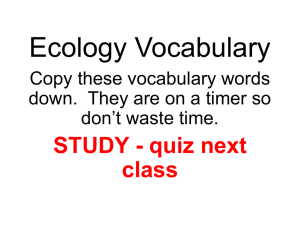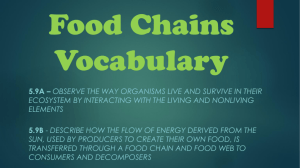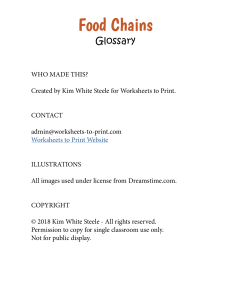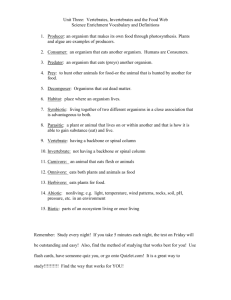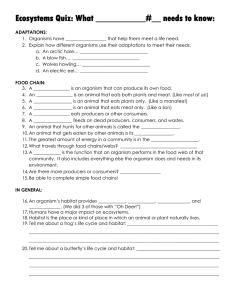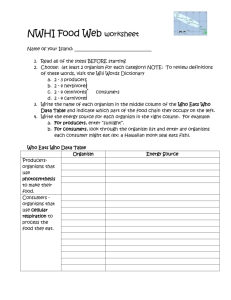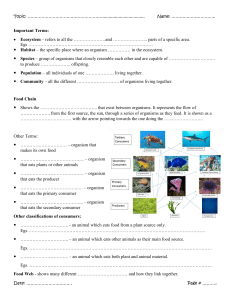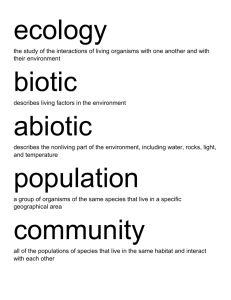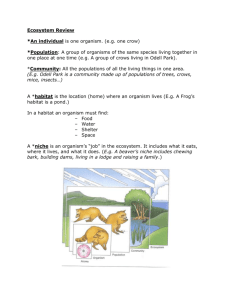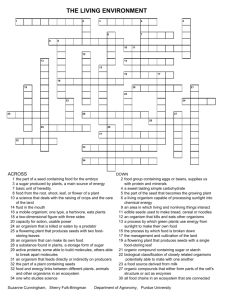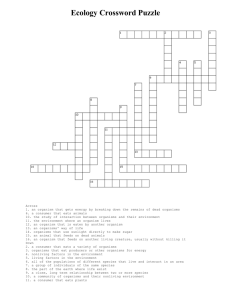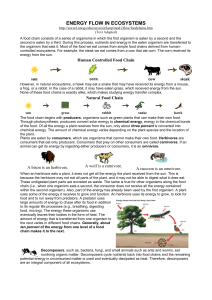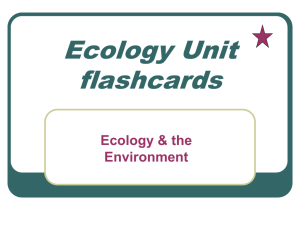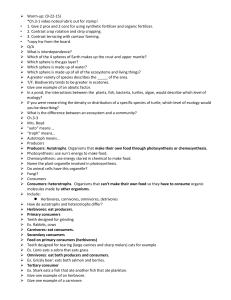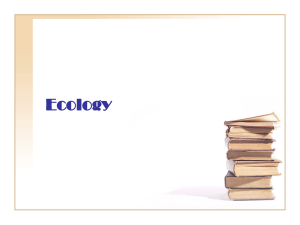ecosystem study guide
advertisement
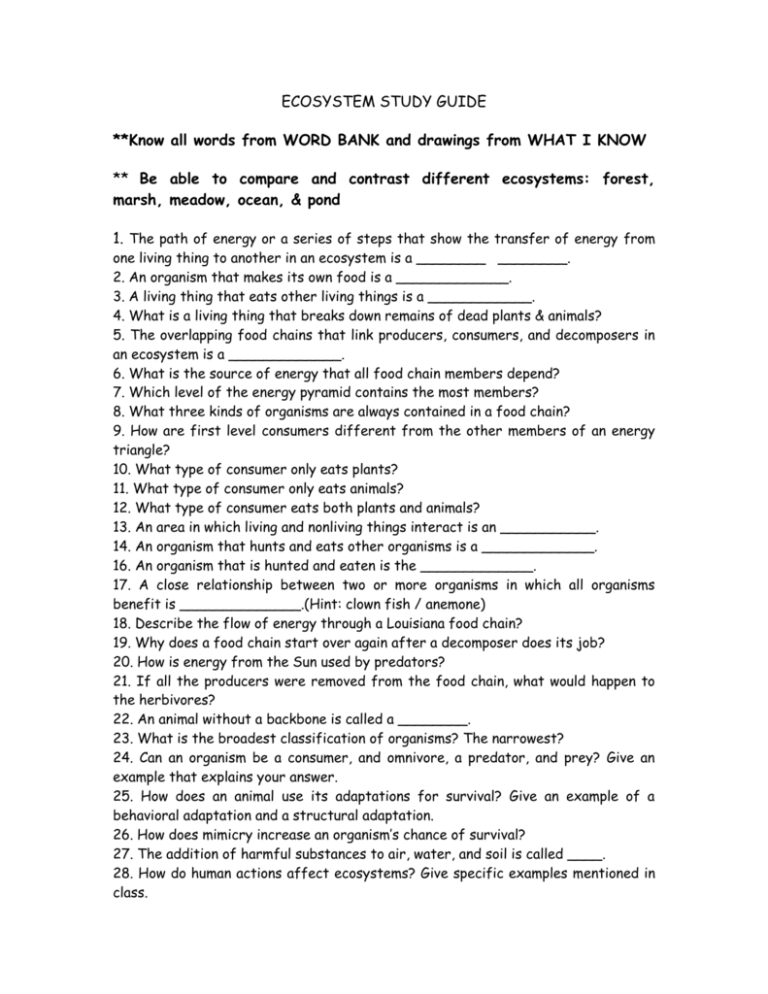
ECOSYSTEM STUDY GUIDE **Know all words from WORD BANK and drawings from WHAT I KNOW ** Be able to compare and contrast different ecosystems: forest, marsh, meadow, ocean, & pond 1. The path of energy or a series of steps that show the transfer of energy from one living thing to another in an ecosystem is a ________ ________. 2. An organism that makes its own food is a _____________. 3. A living thing that eats other living things is a ____________. 4. What is a living thing that breaks down remains of dead plants & animals? 5. The overlapping food chains that link producers, consumers, and decomposers in an ecosystem is a _____________. 6. What is the source of energy that all food chain members depend? 7. Which level of the energy pyramid contains the most members? 8. What three kinds of organisms are always contained in a food chain? 9. How are first level consumers different from the other members of an energy triangle? 10. What type of consumer only eats plants? 11. What type of consumer only eats animals? 12. What type of consumer eats both plants and animals? 13. An area in which living and nonliving things interact is an ___________. 14. An organism that hunts and eats other organisms is a _____________. 16. An organism that is hunted and eaten is the _____________. 17. A close relationship between two or more organisms in which all organisms benefit is ______________.(Hint: clown fish / anemone) 18. Describe the flow of energy through a Louisiana food chain? 19. Why does a food chain start over again after a decomposer does its job? 20. How is energy from the Sun used by predators? 21. If all the producers were removed from the food chain, what would happen to the herbivores? 22. An animal without a backbone is called a ________. 23. What is the broadest classification of organisms? The narrowest? 24. Can an organism be a consumer, and omnivore, a predator, and prey? Give an example that explains your answer. 25. How does an animal use its adaptations for survival? Give an example of a behavioral adaptation and a structural adaptation. 26. How does mimicry increase an organism’s chance of survival? 27. The addition of harmful substances to air, water, and soil is called ____. 28. How do human actions affect ecosystems? Give specific examples mentioned in class. NEED BONUS POINTS? Instructions: Complete the task below and turn it in with your test. All work must be neat and show effort was made in the construction of the task. All explanations must be in LEAP form and all components must be complete in order to receive the full 25 bonus points. Task: Read pgs. 262 – 270 in your Science textbook. On a sheet of construction paper: Complete the Trifold Guide from pg. 271. You must complete the statements and add details about major land and water ecosystems. On a sheet of looseleaf: 1. Complete all vocabulary words from this section .

